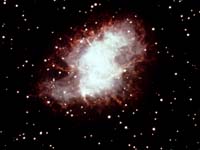Do stars evolve?

Some of what astronomers describe as “stellar evolution” does take place. However, the process is misnamed, and parts of it are questionable.
According to this theory, the life of a star is said to begin with the collapse of a gas cloud--a doubtful beginning, as explained in Do new stars form today?. Bypassing this fundamental origin problem, a young star is said to begin in the “main-sequence” category. These are average stars with a stable light output. The great majority of stars are in the main sequence, including our sun. Then when a star's hydrogen fuel runs low, it becomes a red giant or super-giant star. The star expands hundreds of times in size and becomes somewhat cooler. Red giants include Betelgeuse and Aldebaran.
Next, the star may either explode as a supernova or may slowly collapse into a small, hot white dwarf star. The companion star circling Sirius is such a dwarf. Such stars are said to be very old.
Author: Dr. Donald B. DeYoung - adapted from Astronomy and the Bible: Questions and Answers, 2nd Edition (Grand Rapids, Michigan: Baker Books, 2000), 176 pp.
Copyright © 2000, Films for Christ, All Rights Reserved—except as noted on attached “Usage and Copyright” page that grants ChristianAnswers.Net users generous rights for putting this page to work in their homes, personal witnessing, churches and schools.